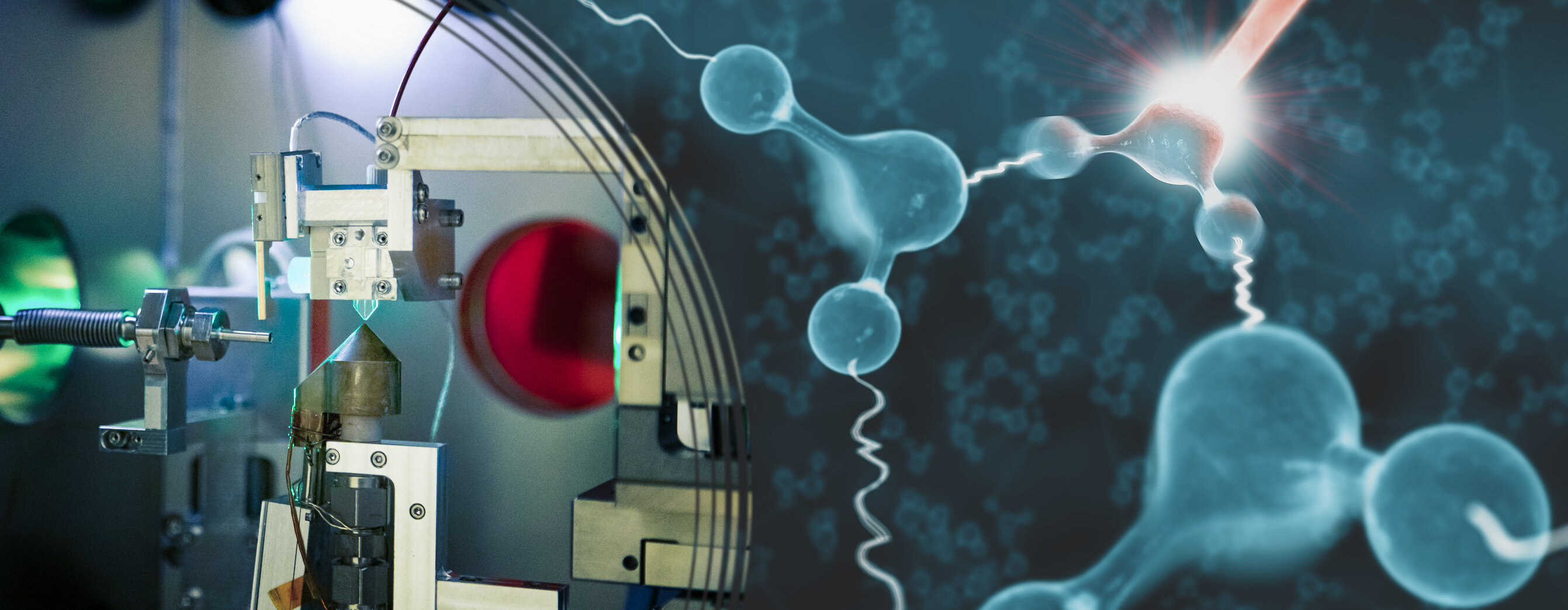Skip to comments.
In a first, scientists capture a 'quantum tug' between neighboring water molecules
Phys dot org ^
| August 25, 2021
| SLAC National Accelerator Laboratory
Posted on 08/29/2021 8:40:58 PM PDT by SunkenCiv
Water is the most abundant yet least understood liquid in nature. It exhibits many strange behaviors that scientists still struggle to explain. While most liquids get denser as they get colder, water is most dense at 39 degrees Fahrenheit, just above its freezing point. This is why ice floats to the top of a drinking glass and lakes freeze from the surface down, allowing marine life to survive cold winters. Water also has an unusually high surface tension, allowing insects to walk on its surface, and a large capacity to store heat, keeping ocean temperatures stable.
Now, a team that includes researchers from the Department of Energy's SLAC National Accelerator Laboratory, Stanford University and Stockholm University in Sweden have made the first direct observation of how hydrogen atoms in water molecules tug and push neighboring water molecules when they are excited with laser light. Their results, published in Nature today, reveal effects that could underpin key aspects of the microscopic origin of water's strange properties and could lead to a better understanding of how water helps proteins function in living organisms...
Each water molecule contains one oxygen atom and two hydrogen atoms, and a web of hydrogen bonds between positively charged hydrogen atoms in one molecule and negatively charged oxygen atoms in neighboring molecules holds them all together. This intricate network is the driving force behind many of water's inexplicable properties, but until recently, researchers were unable to directly observe how a water molecule interacts with its neighbors...
The research team created 100-nanometer-thick jets of liquid water—about 1,000 times thinner than the width of a human hair—and set the water molecules vibrating with infrared laser light. Then they blasted the molecules with short pulses of high-energy electrons from MeV-UED.
(Excerpt) Read more at phys.org ...
TOPICS: Astronomy; Science
KEYWORDS: physics; quantummechanics; quantumtug; science; stringtheory; surfacetension; water; wboopi
Researchers have made the first direct observation of atomic motion in liquid water molecules that have been excited with laser light. Their results reveal effects that could underpin the microscopic origin of water’s strange properties. Credit: Greg Stewart/SLAC National Accelerator Laboratory

1
posted on
08/29/2021 8:40:58 PM PDT
by
SunkenCiv
To: 6SJ7; AdmSmith; AFPhys; Arkinsaw; allmost; aristotleman; autumnraine; bajabaja; ...
2
posted on
08/29/2021 8:41:31 PM PDT
by
SunkenCiv
(Imagine an imaginary menagerie manager imagining managing an imaginary menagerie.)
To: SunkenCiv
Water also has an unusually high surface tension, allowing insects to walk on its surface, and a large capacity to store heat, keeping ocean temperatures stable.It also acts as a global heatsink that evens out climate variability.
3
posted on
08/29/2021 8:46:24 PM PDT
by
LVS1
To: SunkenCiv
Reminds me of when a conference of environmental activists a few years ago passed a resolution calling for a ban on the powerful industrial solvent Dihydrogen monoxide. And their type has the gall to try and educate us about “the science”.
4
posted on
08/29/2021 8:48:21 PM PDT
by
katana
To: SunkenCiv
I feel like drinking a large glass of ice cold quantum tugs.
5
posted on
08/29/2021 8:50:40 PM PDT
by
DannyTN
To: katana
Dihydrogen monoxide You know how many people are killed by that stuff?
6
posted on
08/29/2021 8:53:26 PM PDT
by
gundog
(It was a bright cold day in April, and the clocks were striking thirteen. )
To: SunkenCiv
Reminds of a guy, in Germany I think, that studied the properties of water in nature. Primarily it’s various vortices and such. Came up with some very interesting devices. Can’t recall his name.
7
posted on
08/29/2021 9:04:33 PM PDT
by
LastDayz
(A blunt and brazen Texan. I will not be assimilated.)
To: DannyTN
8
posted on
08/29/2021 9:06:51 PM PDT
by
Beowulf9
To: Beowulf9
9
posted on
08/29/2021 9:13:49 PM PDT
by
DannyTN
To: LVS1
It is caused by hydrogen bonding and has been studied for years. I studied this a little in Chemistry graduate work in the 70’s.
10
posted on
08/30/2021 7:01:54 AM PDT
by
mfish13
(Elections have Consequences.)
To: SunkenCiv
11
posted on
08/30/2021 7:06:57 AM PDT
by
Magnum44
(...against all enemies, foreign and domestic...)
To: SunkenCiv
12
posted on
08/30/2021 7:10:41 AM PDT
by
Lurkina.n.Learnin
(Time flies like an arrow... Fruit flies like a banana )
To: Lurkina.n.Learnin
[singing] Splish, splash...
13
posted on
08/30/2021 7:27:38 AM PDT
by
SunkenCiv
(Imagine an imaginary menagerie manager imagining managing an imaginary menagerie.)
To: LVS1
could shed light on how water led to the origin and survival of life on Earth and inform the development of renewable energy methods." There's the required tie in. Most research these days has to either be connected to global warming or quantum computing.
CO2, the carbon source of all life on Earth, is 125 more concentrated in water than in air, so for net zero carbon schemes, the place to extract it is where most of the work has already been done. Trying to extract it from the air is nuts.
14
posted on
08/30/2021 7:32:43 AM PDT
by
Reeses
(Defund the FIB)
To: SunkenCiv
Big deal....A couple of water molecules fell in love...
15
posted on
08/30/2021 10:57:23 AM PDT
by
SuperLuminal
(Where is another Sam Adams now that we desperately need him?)
Disclaimer:
Opinions posted on Free Republic are those of the individual
posters and do not necessarily represent the opinion of Free Republic or its
management. All materials posted herein are protected by copyright law and the
exemption for fair use of copyrighted works.
FreeRepublic.com is powered by software copyright 2000-2008 John Robinson



